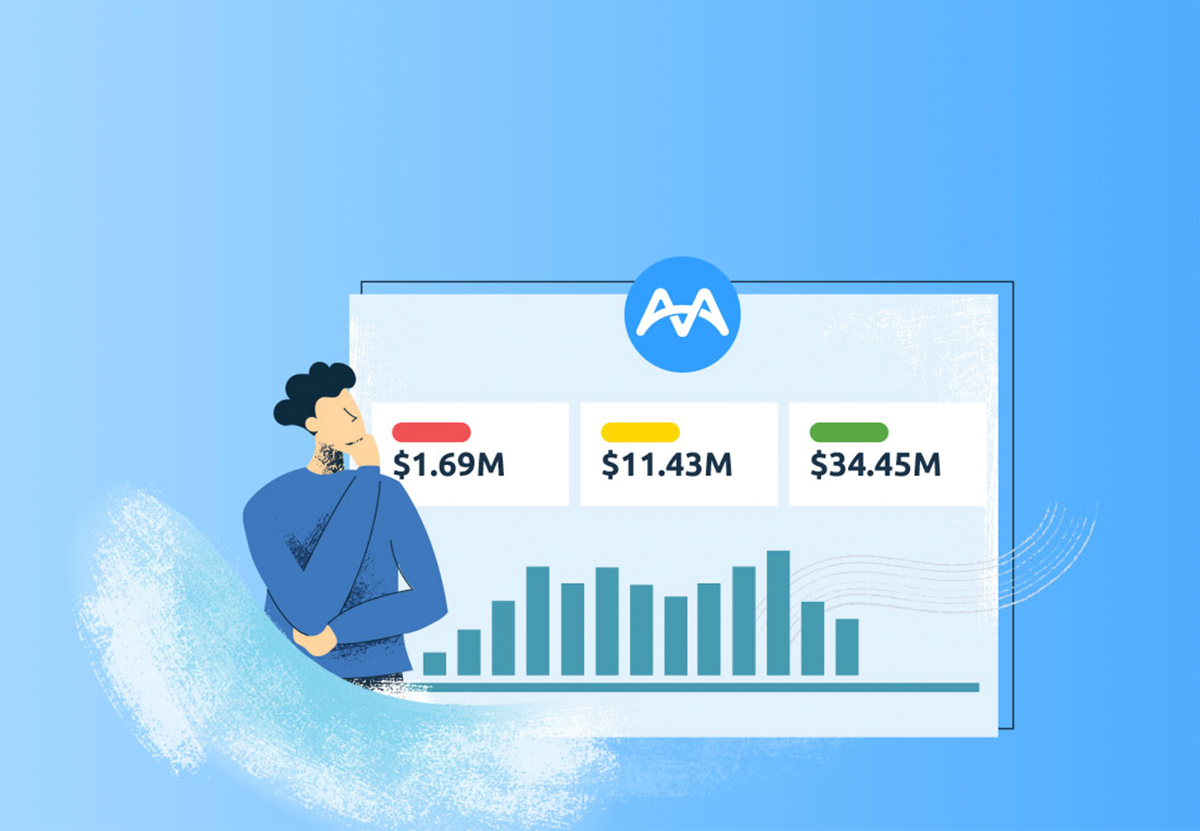AI in the practice of auditing
AI in the practice of auditing

Interview with Stephen McIntosh: The importance of digital auditing tools and AI in auditing practice
Marco Bogendörfer: Let’s start with a look at the audit professionin general: How far have we come with the digital transformation in auditing practice in Germany and Austria – and what impact does it currently have on existing processes in the annual audit?
Stephen McIntosh: That’s not easy to answer and depends crucially on which audit firm you look at. The Big Four have been investing several billion euros in digital technologies for years and create their own solutions. Of course, small and medium-sized audit firms do not have this financial strength.

Stephen McIntosh, tax consultant and auditor, INTARIA AG
But beyond that, in my opinion, it is crucial whether there is a fundamental affinity for digital solutions and willingness to invest in the auditing practice or its management. If this is the case, the digital transformation can and will continue to advance in medium-sized and smaller auditing firms as well.
Ultimately, however, the market will also demand this. Current studies by the Big Four show that more than a third of the companies surveyed expect a degree of automation in annual audit of at least 40% in the next five years. This expectation for the final audit will certainly not only affect the Big Four.
After all, the digital transformation is a process that began many years ago and is constantly being developed. We have been using digital systems for many years to conduct and document our annual audits. These have been successively supplemented by platforms for the secure exchange of sensitive company data, tools for the confirmation of balances and also software for carrying out data analyses, which also enable us to generate samples according to mathematical-statistical methods.
In this way we increase the quality of our audits and become more efficient. In the coming years, small and medium-sized companies will also increasingly digitize their internal processes and thus, for example, handle the procurement process completely digitally, from the notification of requirements, through ordering and receipt of goods, to payment. This data is still too often left unused in the course of auditing.
Data such as requirement notification, order, receipt of goods or payment are still too often left unused during the annual audit.
General ledgers and subsidiary ledgers can be analyzed with the usual data analysis tools, as well as with the Ai Auditor. Additional tools must be used to include digital processes in the annual audit. To answer your question in full: Digital transformation means that existing processes in both auditing practice and annual audit have to be constantly developed further.
„With digital audit tools I can seamlessly analyze 100 percent of the business transactions of a fiscal year for specific anomalies and anomalies.“
Marco Bogendörfer: How can digital audit tools make existing processes more efficient and at the same time safeguard or even increase the quality of the audit?
Stephen McIntosh: An increase in efficiency is usually already achieved when digital audit tools can take over recurring tasks. When employees no longer have to manually print, envelope, send and evaluate balance confirmations, they can focus more on content issues.
Learn more: Information about MindBridge’s Ai Auditor in the portfolio at 5FSoftware!
With digital audit tools – the International Standards on Auditing (ISA) refer to them as automated tools and techniques (ATT) – I can seamlessly analyze 100 percent of the business transactions of a fiscal year for specific anomalies and anomalies. A human being would take far too long for this. Increasing audit quality by using such digital tools is our top priority. We can review certain areas without any gaps, while in other areas digital audit tools enable us to take samples of even better quality because we can consciously select items with a greater risk of error.
Marco Bogendörfer: Do auditors have to complete postgraduate IT studies for this?
Stephen McIntosh: Since auditors do not usually develop and program these tools themselves, there is no need for postgraduate IT studies. But in order to use digital tools in the audit, the employees must also have certain IT skills. Digital tools must be operated, and the results they generate must be interpreted and understood. I also need to be able to analyze and understand the content and structure of data sets before I start using digital tools. Only if I import correct and complete data can I obtain valid analysis results. I therefore believe that the introduction and use of digital testing tools also requires appropriate training for my employees.
Marco Bogendörfer: In your opinion, how sensible is the combined use of data analysis software and collaboration software in the context of the final exam?
Stephen McIntosh: As long as the collaboration software covers areas relevant to the audit process, I think a combination makes a lot of sense. At least we auditors outside the Big Four companies cannot rely on self-developed, fully integrated IT solutions that map the entire audit process. We usually use individual tools from different providers, which do not always have interfaces to the auditing software we use. For example, data must regularly be exported from one system and imported into another system in order to generate samples according to mathematical-statistical methods.
However, if I can now make the generated sample available to the client directly from the same audit tool and perhaps also carry out the documentation in my audit software at the same time, this definitely creates efficiency and is to be recommended. Ideally, this collaboration platform would be directly linked to the client’s ERP system, so that the required data can be generated directly from the client system, prepared by bots or RPAs (Robot Process Automation) and imported into the data analysis software without further manual steps. This saves a lot of time and effort on the client and auditor side.
Marco Bogendörfer: And how can MindBridge’s Ai Auditor add value during a final audit?
Stephen McIntosh: In many ways. The first, very significant improvement compared to our previous tool is that the Ai Auditor generates the balance sheet and profit and loss statement from the imported data. We can therefore immediately check the data received from the client for completeness and accuracy.
In fact, it has often happened that the data generated and provided by the client was incomplete. Unfortunately, data analyses based on such a database lead to results that are useless in the context of annual audits.
„We can immediately check the data received from the client for completeness and correctness.“
The Ai Auditor carries out a risk assessment of all transactions in a fiscal year. For each individual transaction it is transparent how the system arrived at the risk assessment. In particular, the AI-based machine learning algorithms can identify those transactions that are unusual or conspicuous compared to all others.
Additional added value is provided by the graphic displays of the analysis results and the many possibilities to dive directly into the booking material and evaluate it. These are very suitable for making account developments during the course of the year visible and for discussing the causes of these developments with clients.
Marco Bogendörfer: How was the use of the Ai auditor in your office received by the employees?
Stephen McIntosh: All employees who have seen the Ai Auditor or its analyses so far were impressed by the visual presentations and the possibilities of evaluating and analyzing the existing data in greater depth. There is also great interest in seeing and questioning the risk assessment. In addition, there are also employees who basically like the software, but also want to know what concrete advantages the use of the software brings us and how the costs are amortized.
Marco Bogendörfer: And how did clients react to the use of the Ai Auditor?
Stephen McIntosh: We are just starting to use the software as standard for all our statutory audit of financial statement. So the number of clients who have seen the Ai Auditor is not yet that large. During a current audit I showed my client the Ai Auditor and we looked at the higher risk bookings together. We also questioned why the AI-based algorithms classified these bookings as „high risk“. For all bookings, we were able to understand the „assessment“ of the algorithms, even if in the end there was no booking error or even a fraud issue behind it. But first and foremost, it was all about identifying anomalies and anomalies, so-called outliers, and that worked. My client took a very positive view of the software and also the use of the software during our audit.
Marco Bogendörfer: How does the Ai Auditor actually work for auditing practice and what kind of data sets can be analyzed with the help of the Ai Auditor?
Stephen McIntosh: The Ai Auditor analyzes all postings of a fiscal year at general ledger level. For this purpose, we usually have our clients provide us with the „export tax audit“, formerly also called GdPdU data. In the meantime, Ai Auditor also offers the possibility of carrying out analyses for the subsidiary ledgers of debtors and creditors. We do not currently use these yet, as we are currently focusing on the introduction and use of the analyses at general ledger level.
Marco Bogendörfer: How must these data sets be created in order to be evaluated by the Ai Auditor? What are your practical experiences with data preparation?
Stephen McIntosh: Basically, the data sets must be available either as Excel files or CSV files in order to be imported into the software. With larger data sets, the capacity limits of Excel files are quickly reached due to the given line limits.
In addition, the data sets „Export tax audit“ or „GdPdU data“ consist of text files without column headings. We have written a program for these data that can quickly convert them into a CSV file with headings. I would say that in about 80% of the cases we can import the data records without major problems.
With special data sets – for example, data sets with unknown data format – or data sets of several gigabytes in size, we came to our limits. With the help of MindBridge’s experts, however, we have been able to import and evaluate all data sets into the software. The data sets sometimes contain very different information regarding content and size.
It is therefore necessary to look at the content of each data set, as this determines the later evaluation and analysis options. For an unproblematic data set, we therefore need about 30 to 60 minutes for importing.
Since the Ai Auditor uses its own account logic for the analyses, a further step is required. The accounts in the data set must be assigned to the corresponding MindBridge account codes – so-called MAC codes. This account mapping is required for each newly created client and currently takes the most time.
Marco Bogendörfer: What analysis results does the Ai Auditor provide? Are these standard reports or can individual evaluations also be output?
Stephen McIntosh: By default, Ai Auditor provides several risk overviews for the analyzed data set. All postings at general ledger level are subjected to 29 analyses – the so-called control points. The results of each entry are aggregated to an overall risk and are shown in the categories high, medium or low risk depending on the amount of the calculated risk value. The individual bookings can then be viewed for further examination.
In addition, the risk per balance sheet or income statement item is also shown in a kind of pie chart. Depending on the scope of the information available via the data set, the number and risk values of the bookings by employee, type of transaction – for example invoice or credit note, etc. – can also be displayed. – or other characteristics can be displayed in an X-Y diagram.
Finally, a whole range of ratio figures, the so-called ratios, are available as graphics by default. Subdivided into the categories Activity, Going Concern, Liquidity and Profitability, 25 graphs can currently be displayed, each showing the development of the ratio over the course of the year.
And finally, there are many more options for creating your own evaluations and analyses. For example, own ratios can be defined and created. Or the annual development of individual accounts can be displayed in a graph, also in direct comparison to the development of other accounts. Basically, it is possible to filter and analyze according to all information available in the data set.
Marco Bogendörfer: How is the reliability of the MindBridge data analysis software guaranteed?
Stephen McIntosh: One of the most important prerequisites for the utilization of the analysis results in the context of audits is that the analyzed data corresponds to the audited financial statements. If my analyses and conclusions are based on incomplete or incorrect data, they are worthless for use in the context of an annual audit.
In contrast to other tools, Ai Auditor generates a balance sheet and a profit and loss statement from the imported data and on the basis of client-specific account mapping. As a first audit step, these are reconciled with the client’s annual financial statements. Only when these match exactly do we start evaluating the analysis results.
Marco Bogendörfer: What are currently the biggest obstacles or challenges for the widespread use of data analysis tools?
Stephen McIntosh: From a technical point of view, the biggest challenge is to get the data first and then to import it quickly and completely into the respective data analysis tool. There are simply so many different ERP or accounting systems that the process of exporting data is never the same and the information contained in each is very different. Also, not all our clients have their own IT department and/or the necessary knowledge to create the data downloads.
In some cases, the data protection officer of a company must first be convinced that we can and should receive the data for auditing purposes.
Within the auditing practice, the auditing process must be adapted. The analyses must be used from the beginning of the audit planning and then until the end of the audit. Only then can the integration of the software lead to increased efficiency. However, this also requires that the audit teams have IT competence in addition to accounting and auditing knowledge. This in turn means that training is required for the employees concerned.
Marco Bogendörfer: How can these challenges be overcome?
Stephen McIntosh: By getting everyone involved to do their part. Since we ourselves cannot invest millions or billions of euros in development, we depend on software providers to gradually and rapidly expand their compatibility with ERP systems. I think we can also rely on the market mechanism here, because there is also competition in the market for data analysis tools.
We will have to invest in the further training of our employees and will constantly have to deal with the efficient use of technology as part of our annual audits. Ultimately, the efficiency gains achieved should create scope for developing new products and areas of application. In the end, the investments should also pay for themselves.
Marco Bogendörfer: Does a 100 % data analysis also enable a 100 % check?
Stephen McIntosh: No. A 100% data analysis provides valuable information and supports detailed and sound analytical audit procedures. In addition, by identifying anomalies in the accounting material, it can very well address the risk of misstatements in the financial statements due to fraudulent acts.
Data analyses can also be used to perform individual case audits, for example, by analyzing ratios such as inventory turnover or receivables coverage. However, when it comes to checking the existence of assets, debts, etc., you will not be able to do this with data analyses alone. As a rule, the IT system landscapes of companies are very heterogeneous, so that the analysis of main and subsidiary ledgers alone does not provide a sufficient picture.
Marco Bogendörfer: How do the results of the data analyses affect the type and scope of manual audit procedures?
Stephen McIntosh: Data analysis helps us to gain and expand our understanding of the procedures, processes and accounting methods of our clients‘ business transactions. This supports the performance of analytical audit procedures, encouraging the asking of better and more relevant questions. Taking into account the results of the data analysis, sample sizes can be reduced if necessary. Considering identified anomalies, the population to be audited can be examined in a more targeted manner with regard to specific risks by consciously selecting sample elements. The selection of random samples is also made much easier, as I can draw them directly in the data analysis tool for each individually organized population.
Marco Bogendörfer: How can the audit evidence obtained through new technologies be documented appropriately?
Stephen McIntosh: Basically, there are no concrete regulations on how the use of the technologies used and the results and audit evidence obtained as a result must be documented. As a result, it must be possible for a knowledgeable outside third party to understand what was done with which results and on what basis and what conclusions were drawn from them.
The Ai Auditor, for example, provides a standard report that explains the analyses carried out by way of example, as well as graphically depicting the risk classification of all transactions and the risks per balance sheet and P&L item with the respective employees making book entries – and summarizing the quantitative analysis results per analysis (control point). This report can be supplemented with comments via editable text fields, so that the conclusions drawn in each case and/or the further audit procedures can be documented centrally in this report. In my opinion, this report is a good basis for documentation.
Marco Bogendörfer: Does the use of the Ai auditor comply with the currently applicable auditing standards?
Stephen McIntosh: Yes, because the auditing standards do not make any specific demands on the systems to be used. The objective of the audit – to deliver an audit evidence with reasonable assurance – does not change through the use of data analysis tools. However, the way in which sufficient assurance can be achieved can be changed through the use of data analysis tools.
Since the Ai Auditor also uses AI-based algorithms in the form of machine learning, the so-called black box problem must also be taken into account: We cannot say exactly on which basis the algorithm generates its results. We know which data is the basis and we can see the results. The path to this remains invisible. Against this background, the results must be assessed and, if necessary, supplemented by further audit procedures. In the future, there will probably be certified algorithms for this purpose, whose mode of operation and effectiveness have been tested in a suitable manner.
Marco Bogendörfer: What skills and mindset should auditors bring to the successful digitization of the annual audit?
Stephen McIntosh: They should be open to current digital developments, recognize the relevance of digital transformation in their own auditing practice and be willing to invest. It is also very helpful if auditors have a certain amount of knowledge about the basic nature and structure of the financial data to be analyzed. In the course of using data analysis tools, data set-related questions regularly arise that need to be understood and solved.
„I really enjoy dealing with digital transformation.“
This begins with the import of data into the respective software. If you need external help with every question, you lose time and generate additional costs. I really enjoy dealing with digital transformation. About a year ago, I started to find a better alternative, based on AI-based algorithms, for the data analysis tool we have been using so far.
In the meantime, we are in the middle of the nationwide implementation of the Ai Auditor and the investments have been kept within reasonable limits. The intensive work on digitization regularly leads to further exciting topics and questions, so there are already other topics that I would like to tackle next.
„Our clients have to face the challenges of digitalization and invest continuously to remain competitive. They will not permanently accept if their auditor sticks to established audit methods and techniques and gets stuck in the analog world.“
Marco Bogendörfer: We’ll do another interview about this! An auditing firm is also a company with the intention of making a profit. Some believe that digitization is too expensive, others think it is inhumane and would destroy jobs, and yet others believe that firms that want to sit out the digital transformation are doomed to economic ruin – what is your estimation?
Stephen McIntosh: I believe that in the medium term it will be more expensive not to participate in the ongoing digitalization. Our clients have to face the challenges of digitalization and invest continuously to remain competitive. They will not permanently accept if their auditor sticks to established audit methods and techniques and gets stuck in the analog world.
The client will no longer understand if we perform manual spot checks while other auditing firms cover the entire accounting material digitally. Our clients will also increasingly shift their processes and controls to digital systems. Of course, the audit of whether these processes have been correctly and completely adhered to throughout the entire fiscal year can also be performed manually. However, this will take a lot of time, while a suitably programmed bot will take seconds to perform the same task.
Nor do I believe that digitization will destroy jobs. On the contrary, new jobs will be created, because the bigger and better opportunities will also open up new business areas. After all, these tools can be used not only in the final examination.
As a medium-sized auditor, we will of course not be able to take on a DAX group as an audit mandate. But why should we not be able to offer and perform audit-related consulting services?
I don’t know whether the auditors‘ refusal to digitize will be doomed to failure. But I believe that the market available to them will become increasingly smaller. Depending on the individual situation, it may indeed no longer be necessary to invest on a large scale in individual cases. But if you want to remain successful on the market for the next 5 to 10 years, I believe there is no way around digitization.



